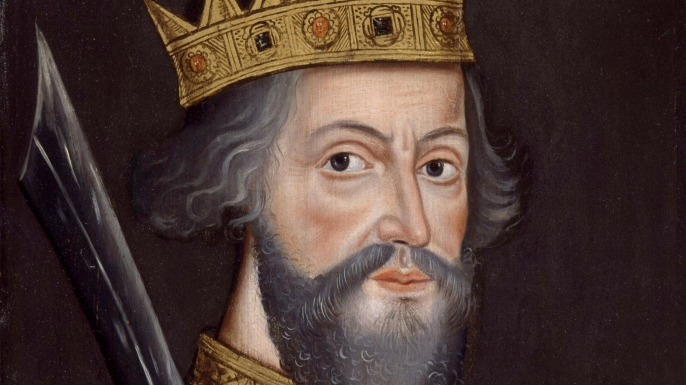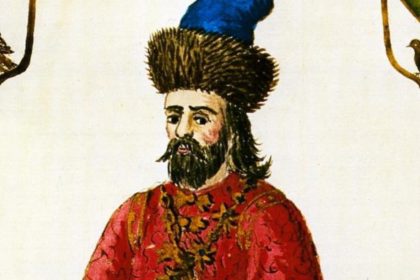William the Conqueror was the first Norman King of England, reigning from 1066 until his death in 1087. A descendant of Rollo, he was Duke of Normandy from 1035 onward. After a long struggle to establish his power, by 1060 his hold on Normandy was secure, and he launched the Norman conquest of England six years later. Take a look below for 30 more fun and interesting facts about William the Conqueror.
1. William was the son of the unmarried Robert I, Duke of Normandy, by Robert’s mistress Herleva.
2. His illegitimate status and his youth caused some difficulties for him after he succeeded his father, as did the anarchy that plagued the first years of his rule.
3. During his childhood and adolescence, members of the Norman aristocracy fought each other, both for control of the child duke and for their own ends.
4. In 1047, William was able to quash a rebellion and begin to establish his authority over the duchy, a process that wasn’t complete until about 1060.
5. His marriage in the 1050s to Matilda of Flanders provided him with a powerful ally in the neighboring county of Flanders.
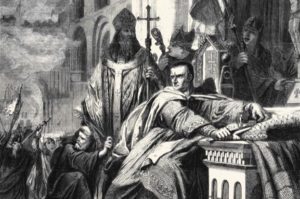
6. By the time of his marriage, William was able to arrange the appointments of his supporters as bishops and abbots in the Norman church.
7. His consolidation of power allowed him to expand his horizons, and by 1062 William was able to secure control of the neighboring county of Maine.
8. In the 1050s and early 1060s, William became a contender for the throne of England, then held by the childless Edward the Confessor, his first cousin once removed.
9. There were other potential claimants, including the powerful English early Harold Godwinson, who was named the next king by Edward on the latter’s deathbed in January 1066.
10. William argued that Edward had previously promised the throne to him and that Harold had sworn to support Williams’ claim. William built a large fleet and invaded England in September 1066, decisively defeating and killing Harold at the Battle of Hastings on October 14, 1066. After further military efforts, William was crowned king on Christmas Day 1066, in London.
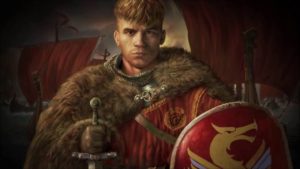
11. Several unsuccessful rebellions followed, but by 1075, William’s hold on England was mostly secure, allowing him to spend the majority of his reign on the continent.
12. William’s final years were marked by difficulties in his continental domains, troubles with his eldest son, and threatened invasions of England by the Danes.
13. In 1086, William ordered the compilation of the Domesday Book, a survey listening all the landholdings in England along with their pre-Conquest and current holders.
14. He died in September, 1087, while leading a campaign in northern France, and was buried in Caen.
15. his reign in England was marked by the construction of castles, the settling of a new Norman nobility on the land, and change in the composition of the English clergy.
16. William didn’t try to integrate his various domains into one empire but instead continued to administer each part separately.
17. William’s lands were divided after his death. Normandy went to his eldest son, Robert Curthose, and his second surviving son, William Rufus, received England.
18. While he was alive, William was known either as “the Great” or “the Bastard,” depending on how people felt about him. The first references to the nickname by which he’s known today, “the Conqueror,” didn’t appear until over 30 years after his death.
19. He gained so much weight later in his life that the French king described William as a pregnant woman about to give birth.
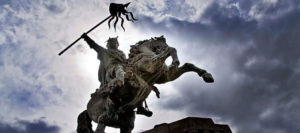
20. According to contemporary sources, when William stepped off his ship and onto English soil, he fell. On the ground, he grabbed the earth with both hands and cried out, “I have taken England with both my hands.”
21. When a town under siege hung the skins of animals on their walls as a way to mock William and his mother about being descended from a tanner, he had the hands and feet of the townsfolk cut off in retaliation.
22. He once allegedly broke a chessboard over the head of the Prince of France after losing a game of chess.
23. His own son, Henry I, had chess pieces thrown in his face by another Price of France who had lost to him.
24. William rode a massive black Andalusian warhorse into battle. The horse was a gift from King Alfonso of Spain, given to young William when he visited there on a pilgrimage.
25. When the North of England rebelled, William had his soldiers kill the rebels and then burn their villages and farms. He also killed all the animals and had the remaining food stocks destroyed, plunging the entire area into famine.
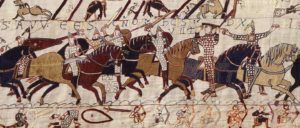
26. William had his half-brother Odo named Bishop of Bayeux and at one point left him in charge of England. However, Odo was a poor leader, governing badly and oppressing the people, so William returned to England and put his brother in prison for five years.
27. When William refused to give Normandy to his second son, Robert, he joined with other nobles in an attempt to overthrow his father. William would eventually forgive Robert after Matilda intervened.
28. William brought the concept of trial by combat to England, where it wasn’t abolished until the 19th century.
29. The Bayeux Tapestry is a 231 foot band of linen that is embroidered with the story of William’s conquest of England and was hung in Bayeux Abbey in France. It was first referred to by historians in 1476, although its actual date of origin is unknown.
30. William introduced beheading by the sword to England. This new method was considered more honorable than the axe as it was more like dying in battle.

